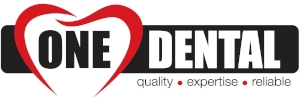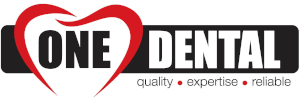|
One Dental Pty Ltd |

|
|---|
Nordent Anterior Scalers
October 2, 2020
Breaking the Status-Quo: Constructing a Hygiene Instrument Kit for YOUR needs
Part 1: Anterior Scalers
Over the 51 years of Nordent's history in manufacturing the highest quality dental instruments, Nordent have talked with thousands hygienists about selecting just the right instruments and often find that it can be quite overwhelming when they see all the patterns and variations available. Selecting just the right instruments is simply a matter of combining your knowledge of how you practice and adapt your instruments with our knowledge of the different patterns and how the designs relate to one another. We would never want to suggest that you, as a hygienist, change the way you practice or adapt your instruments. We simply want to provide you with the perfect patterns that fit the way you do practice. here are some great tips from our friends in Chicago, where our Nordent instruments are manufactured.
A great starting point is to determine which patterns are in your current instrument kit. Instrument kits among hygienists vary greatly in size and selection. We have worked with some hygienists that have 2 scalers in their basic kit and others that have 7 or 8. The patterns in your current kit are often influenced by the hygiene program you attended, offices you have worked for since graduation and lectures and courses you have attended. However, a good basic prophy kit will have, at least, an anterior scaler, a posterior scaler, and a universal curette. Once we know the instruments you are using, it is simply a matter of asking about your likes, dislikes, and challenges to help you find your perfect kit.
- Have you ever used an anterior scaler that was completely straight before?
- Do you depend on the blades being offset, meaning that you are tilting the handle out a little more than if the blade was in line with the handle?
If a straight, in-line anterior scaler does not impact the way you adapt the instrument, you do not necessarily need same sickle blade on both ends and there are some combinations for you to consider that can be very efficient and effective. We offer many combinations and even customise so you can have your 2 favourites on one handle. *
We all know that many patients accumulate calculus and stain on anterior lingual surfaces and there are combinations that make it easy and efficient to access those areas and remove the calculus and stain.
If you would like your anterior scaler to make it easier to access maxillary anterior lingual surfaces, combining your standard #5 sickle with the round blade of an anterior spoon (N5-N1) would be your fit. The round bladed #1 anterior spoon adapts well to the grooves and concavities of the upper lingual anterior and you would use the #5 sickle for the facial and interproximal surfaces.
If you would like your anterior scaler to make it easier for you to access mandibular anterior lingual surfaces, you would enjoy the N5-48 which combines your standard #5 sickle with a small anterior hoe. The #48 hoe blade has a straight cutting edge across the front of the blade and adapts very well to the flat lingual surfaces of the lower anterior. You can use the back of the hoe blade to push the gingiva back and effectively scale along the margin. Again, you would then use the #5 sickle for all facial and interproximal surfaces.
For the hygienist that would like the best of both worlds, we suggest adding a particular instrument to your armamentarium. The ALSR 9Anterior Lingual Stain Remover combines the anterior spoon on one end and the anterior hoe on the other, allowing you to have one instrument that is perfectly designed to remove all calculus and stain from anterior lingual surfaces. If this is your choice, we suggest just getting a few to keep bagged separately in the drawer rather than a permanent place in your kit. There are two reasons for this. First, you will still need another anterior scaler, like a 6/7 or J1S-N5, for facial and interproximal surfaces. Second, depending on your patient population, you will not need the ALSR for every patient. It is one of those instruments that makes things very efficient when you do need it, but you may not need it with every patient.
Check back soon for Part 2 of this series where we discuss Posterior Scalers.








